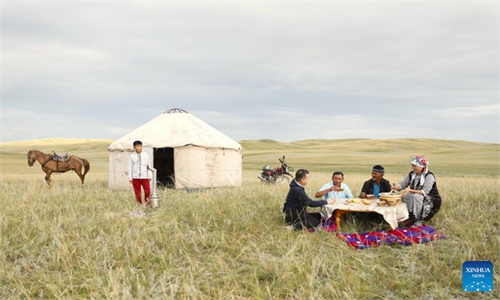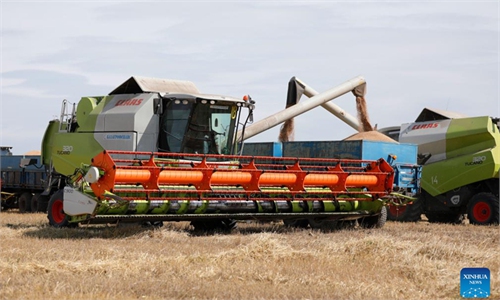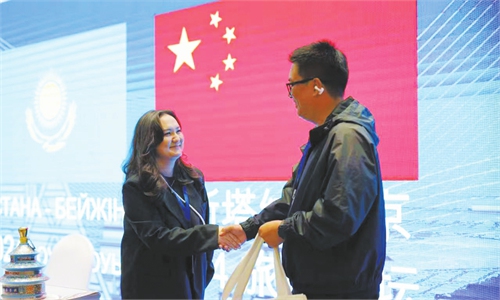ARTS / CULTURE & LEISURE
Feel Chinese elements in Kazakhstan: NEVs from China fuel green transformation; street named after renowned composer
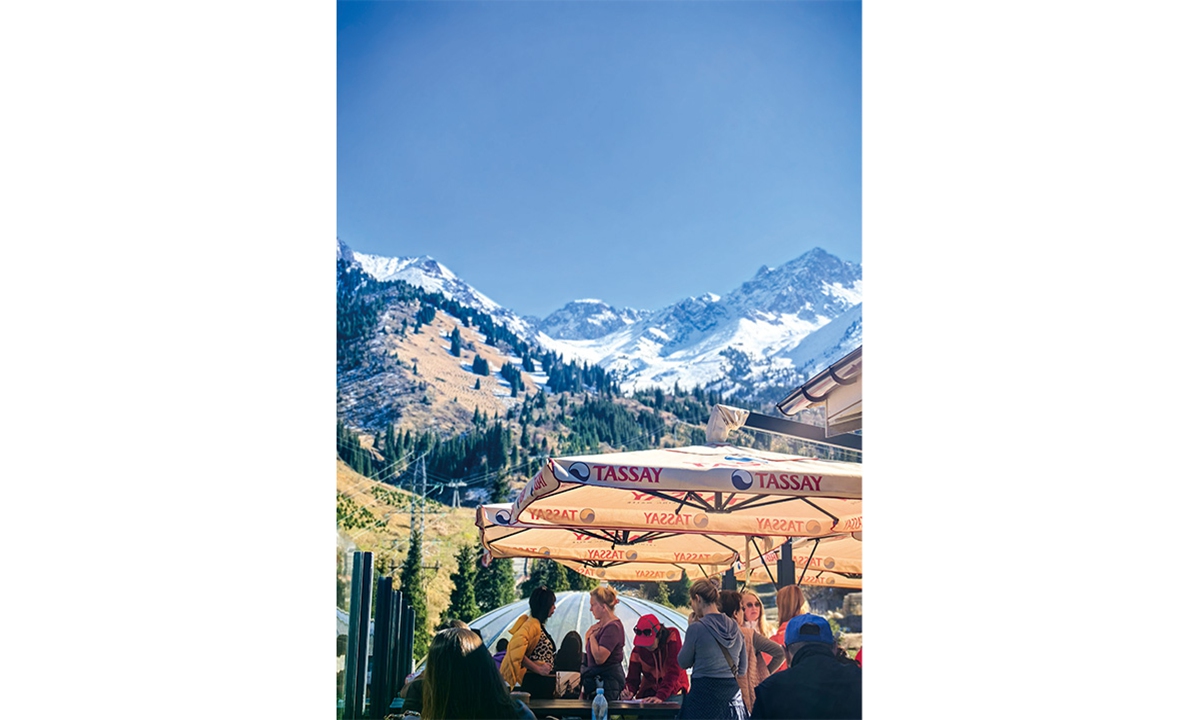
Medeu Complex, a popular destination for both residents of Almaty and visitors looking to enjoy an active and cheerful winter weekend Photos: Cao Siqi/GT
Kazakhstan is the largest country in Central Asia, bordering Russia, China, Kyrgyzstan, Uzbekistan and Turkmenistan as well as the Caspian Sea. It is the ninth largest country in the world, equivalent in size to Western Europe, and is also the world's largest landlocked country. Additionally, the country is rich in various solid minerals and is the world's largest producer of natural uranium.
In recent years, Kazakhstan has launched a promotional campaign called "Born Bold" aimed at showcasing to the world the country's dynamic and forward-thinking approach to economic growth, social progress and innovation. By choosing the word "Bold," the Kazakh people emphasize the confidence with which the country is stepping onto the global stage, ready to engage with the world and showcase its potential.
I thus decided to choose Kazakhstan as my first destination to explore Central Asia, a key route for some of the earliest hominins migrating across the continent, as well as a good neighbor, friend, partner and brother of China.
Green transition
Considering that autumn is the best season to explore Southern Kazakhstan, I chose Almaty as my first stop. This city, the leading cultural and commercial hub of Kazakhstan, is characterized by a strong Soviet influence, lush urban scenery, and a blend of Asian and European cultures. The myriad cafes and restaurants give the city a relaxed atmosphere that sets it apart from others.
The snow-capped peaks of the Tianshan Mountains add depth to the urban landscape, allowing me to feel the breath of nature even within the city. Following the guidance of local residents, I visited Medeu, one of the most popular places for spending an active and cheerful winter weekend. The complex, located in the Small Almaty Gorge at 1,700 meters above sea level, dates back to 1972. Since then, several hundred world records have been set here. Although the Medeu Complex was built for sporting events and competitions in speed skating, ice hockey and figure skating, its ice field is also open to ordinary ice-skaters.
On my way to the highest point of the ski resort, the Big Talgar Pass, which is situated at 3,180 meters above sea level, I was surprised to discover that Chinese-made new-energy vehicles (NEVs) are so popular in the city that almost all the cars waiting for tourists are from Chinese brands.
Local residents told me that Chinese companies highly value the development potential of the Kazakhstan NEV market, and are introducing more Chinese NEVs and technologies to the country. Some said that they used to drive Mercedes or BMW cars, but now prefer BYD and Geely due to their attractive prices and designs.
Kazakhstan is gearing up to transform its public transportation into green vehicles. The latest data show that in August 2024, the number of newly registered electric vehicles in Kazakhstan reached 10,700, which is 2.3 times more than in August 2023.
During a city walk on Almaty, I noticed charging stations at gas stations, service stations, parking lots, residential areas, public spaces, and commercial districts. This ensures that electric vehicle owners can conveniently charge their vehicles at any time.
Made-in-China NEVs are contributing to its de-carbonization efforts, as Kazakhstan aims to establish a green economy as a key principle of its economic policy.

A nomadic warrior gazes at his eagle at the Nomad Ethnocenter, located on the Ushkonyr Plateau in Almaty.
Enduring brotherhood
China and Kazakhstan have always been closely connected neighbors. However, I did not expect to see a street in Almaty named after the famous Chinese musician Xian Xinghai. Located in the eastern district of Almaty, next to a bustling main road, and lined with lush trees, the street corner features a monument in the shape of a lotus flower dedicated to Xian. The lower part of the monument resembles overlapping lotus leaves, while the upper part showcases blooming lotus flowers. The lotus flower symbolizes purity and elegance, representing Eastern culture.
The inscription on the monument, carved in Chinese, Kazakh, and Russian, reads: "This street is named Xian Xinghai Street in honor of the outstanding Chinese composer and the messenger of China-Kazakhstan friendship and cultural exchange, Xian Xinghai." When war broke out between Nazi Germany and the former Soviet Union in 1941, the composer was working on a documentary for the Communist Party of China under the alias of Huang Xun in Moscow. Forced to abort his mission and evacuate, he was left alone in Almaty where he knew no one, had no place to stay and couldn't return home. During the most difficult moment in Xian's life, it was Kazakh musician Bakhytzhan Baikadamov and his family who provided Xian with accommodations and food, despite their limited rations.
Music knows no borders. For the last two years of his life, Xian gave local people courage and strength through his music amid the brutal war.
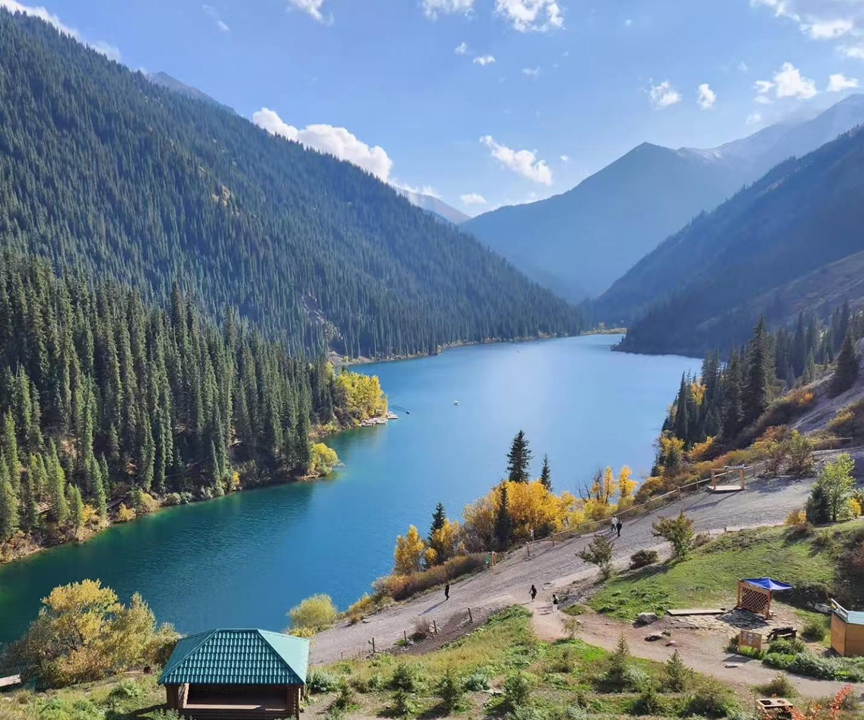
Kolsay is one of the most popular tourist destinations in Kazakhstan. The three beautiful cascade lakes located in the Kolsay Gorge, surrounded by coniferous forests and alpine meadows at altitudes of 1,800 to 2,700 meters above sea level, form the heart of the Kolsay area. Photo: Cao Siqi/GT
Pilgrimage destination
My second stop was Aktau, a city located on the eastern shore of the Caspian Sea. Its name means "white mountain" in the Kazakh language, likely due to the cliffs overlooking the Caspian.
Apart from the stunning scenery of the Caspian Sea, I enjoyed a unique experience by visiting the Mangistau region, a pilgrimage destination known among locals as the land of 362 saints. The Ustyurt Plateau, a clay and stony desert covering an area of almost 200,000 square kilometers, is a must-visit. The Beket Ata underground mosque is also a famous sacred site not only in the region, but nationwide. Born in 1750, Beket Ata was one of the most revered religious teachers, scientists and philosophers in the history of Central Asia.
But what left me the deepest impression was the Mangystau Regional Museum of History and Local Lore, also known as the Ethnographic Museum, which details the region's evolution from prehistory to the present and features numerous dioramas covering the region's geology, paleontology, geography, the burial site of an anti-Tsarist Kazakh warrior who fought in the 1870 Adayev Uprising, and the Ustyurt's ancient desert hunting traps.
Among the displays, I found three pictures depicting ancient Chinese fairy tales, including the famous story of Houyi shooting down the suns. The museum staff told me that this location has witnessed significant cultural exchanges between China and Kazakhstan, promoting mutual learning and supporting the progress of human civilization.
In addition to its strategic location as the main seaport, Aktau has attracted the biggest players in the oil service industry. Today, the region meets its energy and water needs through cooperation with Chinese companies on crude oil and gas power plants. On the desolate stretch of the Gobi Desert, a row of oil extraction machines stands in the field, rewriting the history of Kazakhstan's heavy dependence on imports of asphalt and changing the lives of many local people.


